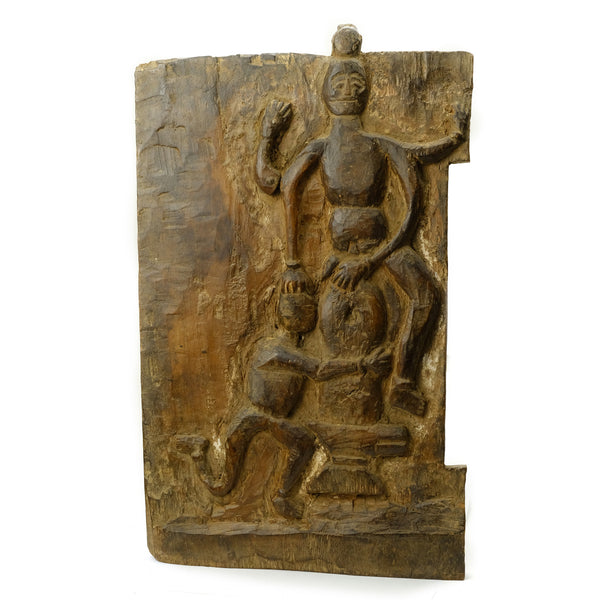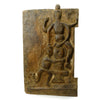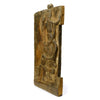Skip to content
Goddess Parvati and a Male Fertility Petitioner Shrine Figure, India #55
$ 1,200.00
-
Goddess Parvati and a Male Fertility Petitioner Shrine Figure, India #55
- Measures approx. 13.5"T x 8.25"W x 1"D
- Circa 1940-50
- Parvati, Uma, or Gauri is the Hindu Goddess of Power, Energy, Nourishment, Harmony, Love, Beauty, Devotion, and Motherhood. In Her complete form, She is a physical representation of Mahadevi, also known as Adi Shakti, the Primordial Female Power behind the Creation of the Universe, the Creator and Destroyer. She is one of the Central Deities of the Goddess-oriented Sect called Shaktism, and the Supreme Goddess in Shaivism. Along with Goddess Lakshmi and Goddess Saraswati, She forms the Tridevi.
- Parvati is the Wife of the Hindu God Shiva. She is the Reincarnation of Sati, the First Wife of Shiva, who immolated Herself during a Yajna (Fire-Sacrifice).
- Parvati is the Daughter of the Mountain-King Himavat and Queen Mena.
- Parvati is the Mother of the Hindu Deities Ganesha and Kartikeya. The Puranas also reference Her to be the Sister of the River Goddess Ganga, and the Preserver God Vishnu. For Shaivites, She is considered to be the Divine Energy between a Man and a Woman, like the Energy of Shiva and Shakti.
- Parvati is generally portrayed as a gentle, nurturing Mother Goddess, but is also associated with several Fearsome Forms to Vanquish Evil Beings such as Durga, Kali, the Ten Mahavidyas, and the Navadurgas.
- Parvati is an Embodiment of Shakti. In Shaivism, She is the Recreative Energy and Power of Shiva, and She is the cause of a bond that connects all Beings and a means of their Spiritual Release.
- She is also well known as Kamarupa (the Embodiment of One's Desires), and Kameshvari (the Lady of One's Desires).
- In Hindu Temples dedicated to Parvati and Shiva, She is symbolically represented as the Argha. Argha literally means ‘that which is deserved’.
Derived from the root ‘argh’ (‘to be valuable’) or ‘arh’ (‘to deserve’), the word ‘argha’ is used in a more technical sense in the Dharmaśāstras. It signifies a Reception Ceremony performed in honor of a bridegroom by his father-in-law, of a newly married couple, on their return to the bride’s house. It is usual to offer madhu - parka (a mixture of honey and other ingredients) on such occasions.
However, it is used in a more restricted sense to indicate the water perfumed with flowers and mixed with durva-grass, rice grains and mustard seeds that is ceremonially offered in Ritualistic Worship of God, as also to honored guests. They are expected to receive it and wash their hands with it. She is found extensively in Ancient Indian Literature, and Her statues and iconography are present in Hindu Temples all over South Asia and Southeast Asia
- Lingam, (Sanskrit: “sign” or “distinguishing symbol”) also spelled Linga. In Hinduism, a Votary Object that symbolizes the God Shiva, and is revered as an Emblem of Generative Power. The Lingam appears in Shaivite temples and in private Shrines throughout India.
- The upper part of the Shiva-Ling represents the Phallus or the Male Organ, whereas the base or the lower part of the Shiva-Ling represents the Yoni or the Vulva. It is this Divine and Cosmic Union that leads to the Creation of New Lives.
- Origin is India




